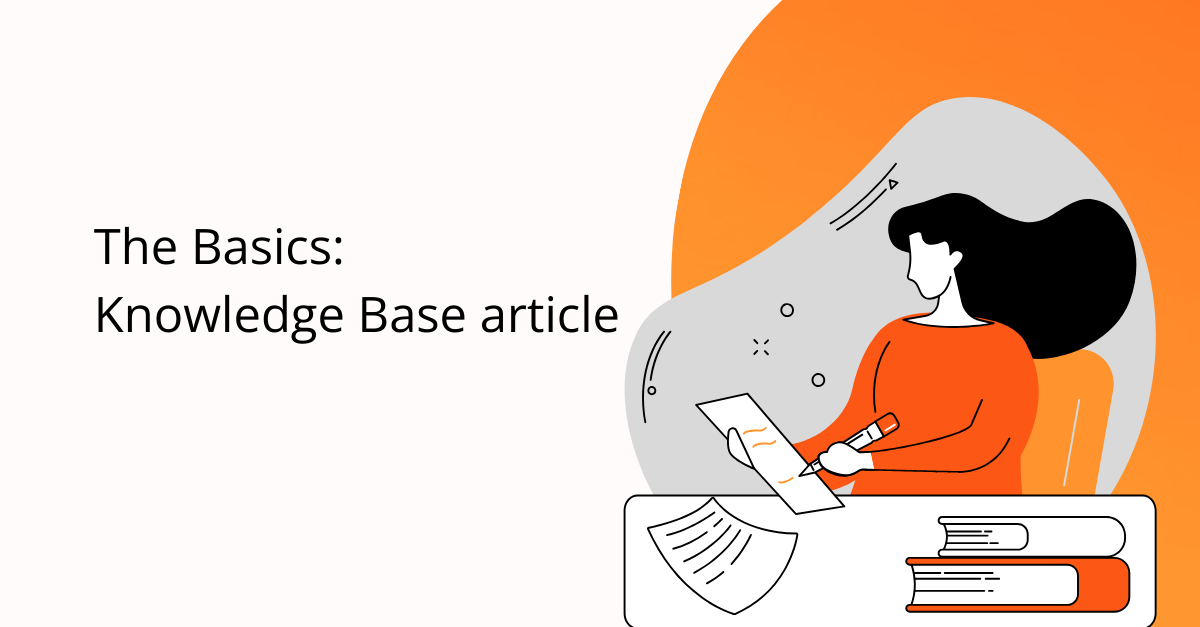
Most SaaS companies should choose Product Fruits for the combination of AI-powered onboarding and conversational support. The dual capability addresses both activation and retention in one platform at competitive pricing.
Teams with specific requirements might choose alternatives:
The activation and retention data favors AI-powered approaches. Product Fruits’ 64% activation rate and 70% churn reduction results demonstrate the advantage of intelligent, adaptive onboarding over static, manually-built tours.
Explore different implementation approaches through use cases. Compare AI-driven adoption strategies or learn whether PLG reduces churn.
Ready to reduce churn and increase activation? Use Product Fruits and let Elvin AI personalize onboarding while Elvin Copilot provides instant support. See switching from other platforms or explore affordable AI support solutions.
The best user onboarding tools that reduce churn and increase activation are Product Fruits with AI-powered personalization achieving 64% activation rates, Appcues for design-focused teams, and Userpilot for product-led companies. With Product Fruits clients were able to reduces churn by 70% already before arrival of Elvin AI, which tops these approaches as it is able to automatically generate personalized onboarding and Elvin Copilot that provides instant support, addressing both the activation and retention sides of user success simultaneously.
Poor onboarding creates a vicious cycle. Users who don’t activate churn quickly. High churn forces companies to acquire more users just to maintain revenue. Acquisition costs stay high while lifetime value stays low. The business struggles to grow.
Good onboarding breaks this cycle. Users who activate quickly develop product habits. Habits drive retention. Retention allows expansion. The unit economics work.
Effective onboarding tools share specific characteristics that directly impact activation and churn.
Generic onboarding treats all users identically. A marketing manager sees the same tour as a developer. This one-size-fits-all approach confuses users and slows activation.
Effective tools personalize based on user attributes. Role, industry, company size, experience level, and goals should shape what guidance each user receives.
Personalization impact:
Product Fruits’ Elvin AI generates personalized onboarding automatically based on user attributes. A project management tool serving team leads, project managers, and contributors creates three different onboarding paths without manual building.
Traditional tools require manually creating separate tours for each segment. This labor-intensive approach limits practical personalization depth.
Time from purchase to live onboarding determines how quickly companies see results. Tools requiring months of setup delay ROI and frustrate teams.
Implementation timeline impact:
Product Fruits typically goes live within 1-2 weeks. Intercom and UserGuiding implement similarly fast. Pendo and WalkMe often require 4-8 weeks.
You can’t optimize what you don’t measure. Effective onboarding tools provide detailed visibility into user progress, drop-off points, and completion patterns.
Critical metrics:
These metrics reveal what works and what needs improvement. Teams iterate based on data rather than assumptions.
Users get stuck during onboarding. The tool’s response determines whether users push through or churn.
Support approaches:
Product Fruits’ Elvin Copilot provides conversational support directly in the product. Users ask questions, get immediate answers, and continue onboarding without friction.
Chemsoft reduced support tickets by 30% using this approach. Users who would have submitted tickets get instant answers instead.
Product Fruits uses Elvin AI to automate personalized onboarding creation. Instead of manually building tours for each user segment, teams annotate their product once and let the AI generate appropriate guidance automatically.
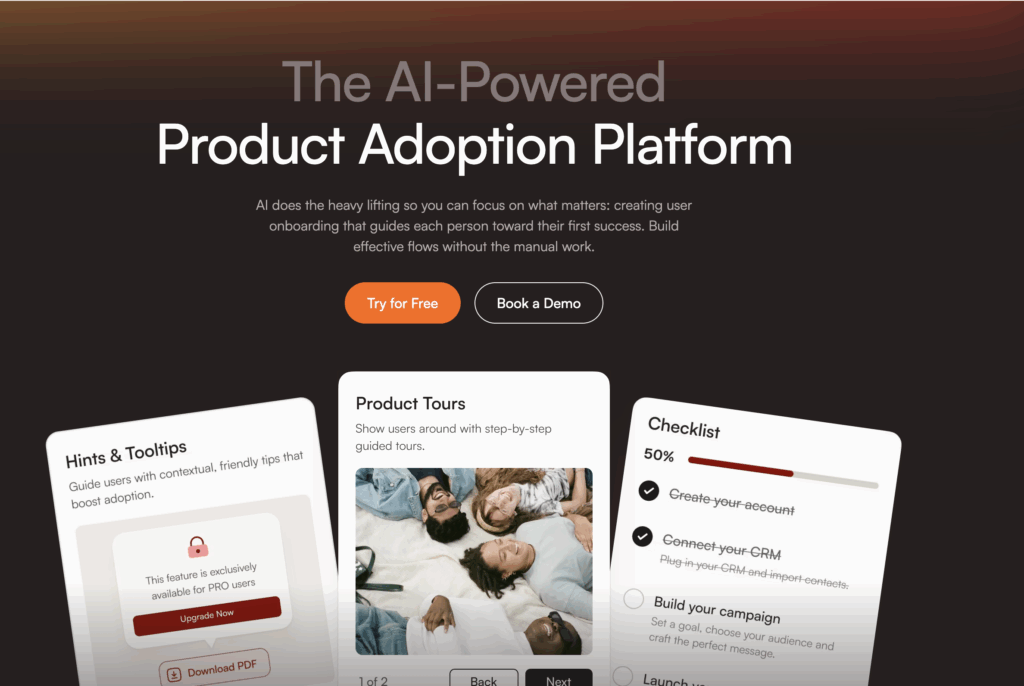
Activation capabilities:
Churn reduction capabilities:
Results:
Pricing: $96/month for full platform with AI features.
Best for: SaaS companies with diverse user segments needing personalized onboarding at scale. Teams wanting both activation and retention tools in one platform.
Why it reduces churn AND increases activation: The dual approach addresses both sides of user success. AI-powered onboarding drives fast activation. Conversational support prevents abandonment. Continuous engagement maintains momentum. See how it works for implementation details.
Appcues pioneered no-code onboarding with a visual builder for creating product tours, tooltips, and checklists. The platform emphasizes design flexibility and ease of use.

Activation capabilities:
Churn reduction capabilities:
Limitations: No AI capabilities. All tours built manually. Premium pricing at higher volumes. Lacks conversational support.
Pricing: Starts at $300/month, scaling with features and user volume.
Best for: Established SaaS companies with design-conscious product teams wanting granular control over onboarding appearance.
Userpilot combines onboarding tools with product analytics. Teams see where users struggle and build interventions at those exact points.

Activation capabilities:
Churn reduction capabilities:
Limitations: Steeper learning curve than simpler alternatives. Higher price point. No AI personalization. Complex interface can overwhelm smaller teams.
Pricing: Starts at $249/month, scaling with features and volume.
Best for: Product-led companies wanting onboarding and analytics in one platform. Teams with dedicated product operations resources.
UserGuiding focuses on simplicity and fast implementation. The straightforward interface helps smaller teams launch onboarding quickly without complexity.
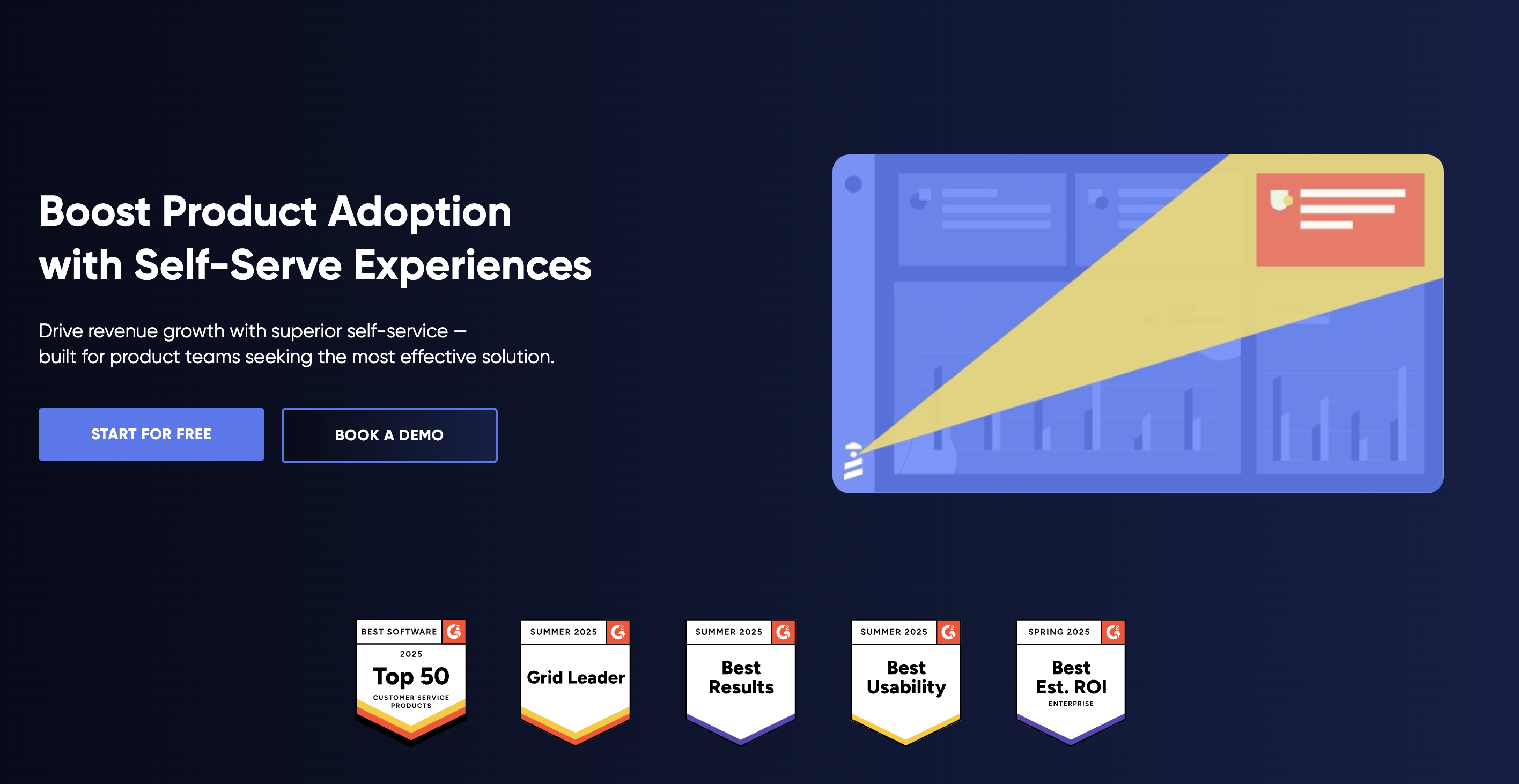
Activation capabilities:
Churn reduction capabilities:
Limitations: Less sophisticated than premium alternatives. Limited personalization depth. No AI features. Basic analytics compared to dedicated platforms.
Pricing: Starts at $174/month for basic features.
Best for: Small to mid-size teams needing basic onboarding launched quickly. Companies without dedicated product operations roles.
Pendo provides comprehensive product analytics alongside onboarding tools. The platform targets enterprise customers with extensive feature sets.
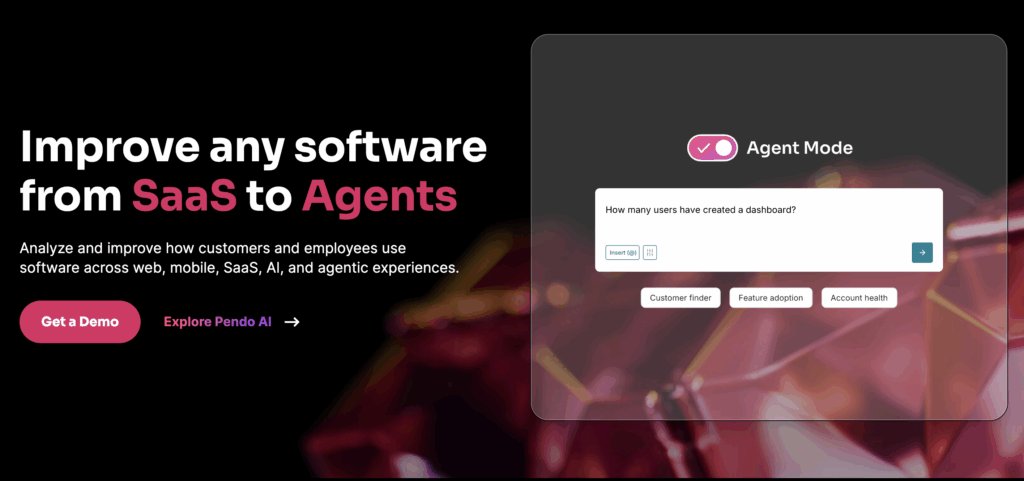
Activation capabilities:
Churn reduction capabilities:
Limitations: Complex setup and learning curve. Enterprise pricing restricts smaller teams. Implementation timeline 4-8 weeks typical. Overkill for companies needing simple onboarding.
Pricing: Custom enterprise pricing, typically starts above $20,000 annually.
Best for: Enterprise SaaS companies with dedicated product teams needing comprehensive analytics and guidance in one platform.
Chameleon emphasizes design flexibility and user experience. The platform gives teams full control over how onboarding elements look and behave.

Activation capabilities:
Churn reduction capabilities:
Limitations: Design flexibility requires time investment. No AI capabilities. Premium pricing. More complex than simpler alternatives.
Pricing: Starts at $279/month.
Best for: Design-conscious teams needing onboarding matching exact brand standards. Companies where visual consistency matters significantly.
WalkMe targets enterprise customers with complex software. The platform handles onboarding for web applications, desktop software, and internal tools at scale.
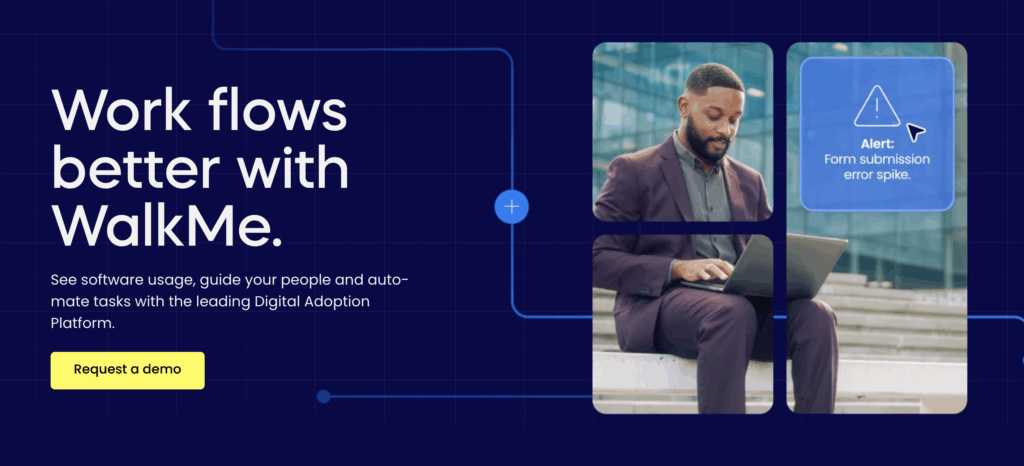
Activation capabilities:
Churn reduction capabilities:
Limitations: Enterprise complexity and pricing. Long implementation timelines. Overkill for smaller companies. Requires substantial configuration.
Pricing: Custom enterprise contracts, typically starting above $10,000 annually.
Best for: Large enterprises with complex internal tools or enterprise software products. Organizations needing extensive compliance features.
Userflow provides clean, focused onboarding tools designed for product-led growth companies. The platform prioritizes simplicity without sacrificing capability.
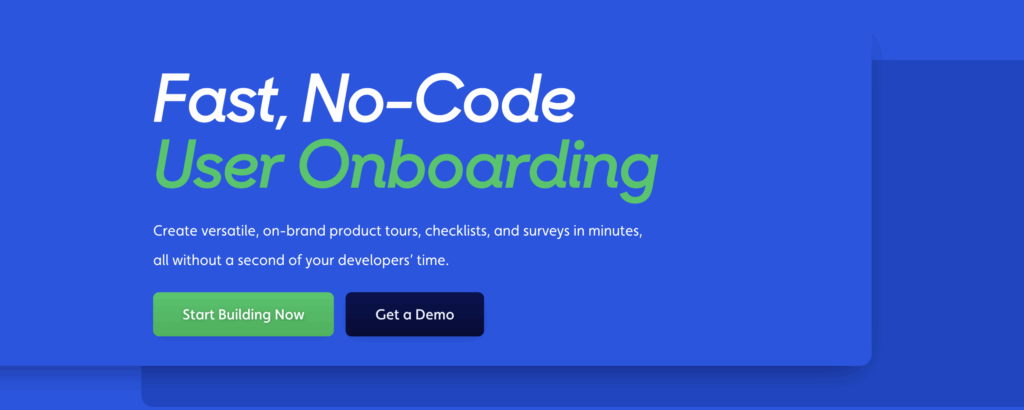
Activation capabilities:
Churn reduction capabilities:
Limitations: Limited compared to comprehensive platforms. No AI features. Smaller integration ecosystem. Basic analytics.
Pricing: Starts at $240/month.
Best for: Product-led SaaS companies wanting straightforward onboarding without complexity. Teams valuing simplicity over comprehensive feature sets.
Whatfix serves both external product onboarding and internal tool training. The platform works across multiple applications simultaneously.
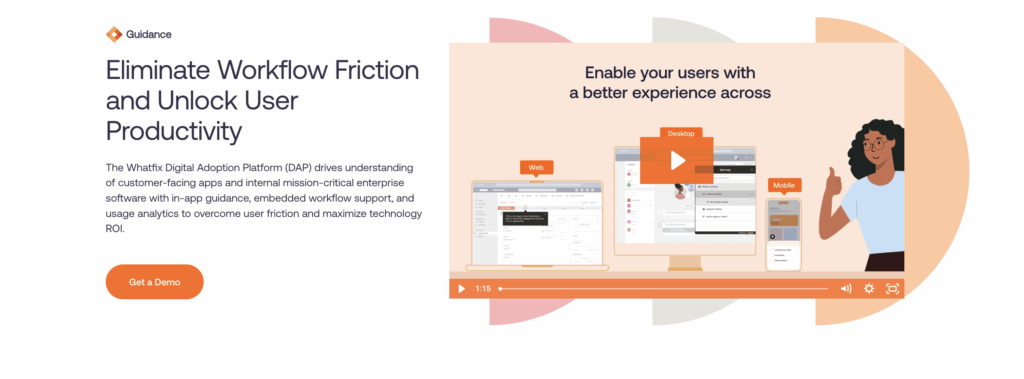
Activation capabilities:
Churn reduction capabilities:
Limitations: Designed for broader use cases than pure product onboarding. More complexity than focused alternatives. Learning curve for full utilization.
Pricing: Custom pricing based on needs.
Best for: Companies needing onboarding across multiple applications. Organizations with significant internal training needs alongside product onboarding.
Inline Manual provides context-sensitive help and walkthroughs. The platform emphasizes just-in-time guidance over structured tours.

Activation capabilities:
Churn reduction capabilities:
Limitations: Less structured than tour-based platforms. Requires well-organized help content. Limited compared to comprehensive alternatives.
Pricing: Starts at $79/month.
Best for: Companies with extensive documentation wanting to surface it contextually. Teams preferring help-on-demand over structured onboarding.

Most churn happens in the first 30 days when users fail to activate. Onboarding tools address this by accelerating time to first value.
Mechanism:
Impact: Companies using effective onboarding tools reduce first-month churn by 40-50%. Keboola accelerated onboarding by 29% using Product Fruits, directly reducing early abandonment.
Mid-stage churn occurs when users activate initially but fail to develop sustained habits. Onboarding tools address this through continuous engagement.
Mechanism:
Impact: Continuous engagement reduces months 2-6 churn by 30-40%. FitnessPlayer reduced churn by 70% using ongoing AI-driven engagement through Product Fruits.
Late-stage churn happens when products stop delivering value or users find better alternatives. Onboarding tools address this by driving deeper product adoption.
Mechanism:
Impact: Deeper product adoption reduces late-stage churn by 20-30%. Users adopting 5+ features churn at half the rate of users stuck at 1-2 features.
Effective onboarding compresses time from signup to first success. Every day saved increases activation probability.
Traditional approach: Users explore independently. Average time to activation: 7-14 days. Many never find key features.
Tool-driven approach: Guided flows direct users to critical actions. Average time to activation: 1-3 days. Clear path eliminates confusion.
Impact: Each day reduction in time to first value increases activation rate by 3-5%. Product Fruits customers achieve 64% activation versus 25% industry average largely due to AI-powered guidance that eliminates wasted exploration time.
Different users need different activation journeys. Generic onboarding confuses users whose needs don’t match the default path.
Generic approach: Everyone sees identical onboarding. Irrelevant steps confuse users. Activation rate: 20-30%.
Personalized approach: Users see guidance relevant to their role and goals. Every step makes sense for their situation. Activation rate: 50-70%.
Impact: Personalization improves activation by 60-100% relative to generic approaches. Product Fruits’ Elvin AI handles personalization automatically without manual tour building for each segment.
Users who get stuck during onboarding either get help or churn. Response time determines outcomes.
Support ticket approach: Submit ticket, wait hours or days, lose momentum. 40-60% never complete onboarding after getting stuck.
Instant AI approach: Ask question, get immediate answer, continue onboarding. 70-85% complete onboarding after AI-assisted unstick.
Impact: Instant support through Elvin Copilot improves activation by 15-25%. Adeus delivers 24/7 support using this approach without staffing overnight shifts.
Users need to see how close they are to success. Unclear progress creates uncertainty and abandonment.
Unclear progress: Users don’t know what remains. Uncertainty breeds abandonment. Completion rate: 30-45%.
Clear progress: Checklists show exactly what’s left. Proximity to completion motivates finishing. Completion rate: 60-80%.
Impact: Onboarding checklists improve completion rates by 40-60%. Visual progress indicators create psychological commitment to finishing.
Primary needs: Fast implementation, clear ROI, simple operation, affordable pricing.
Best choices: Product Fruits for comprehensive solution. UserGuiding for basic needs on tight budget.
Why: Limited resources demand tools that work immediately without complex setup. Product Fruits delivers both onboarding and support in one platform at $96. UserGuiding provides basic onboarding at $174 for very early companies.
Avoid: Enterprise platforms (Pendo, WalkMe) that cost more and require extensive implementation.
Primary needs: Scalable personalization, detailed analytics, reliable performance, professional support.
Best choices: Product Fruits for AI-powered personalization. Userpilot for analytics-driven optimization. Appcues for design-focused teams.
Why: Growing user bases demand sophisticated personalization that manual tour building can’t sustain. Product Fruits’ AI generates personalized onboarding at scale. Userpilot provides deep analytics for optimization.
Consider: Budget now supports premium tools ($500-$1,500/month). Choose based on specific needs rather than just affordability.
Primary needs: Enterprise features, security compliance, advanced customization, dedicated support.
Best choices: Product Fruits for scalability and AI. Pendo for comprehensive analytics. WalkMe for complex enterprise needs.
Why: Enterprise requirements include SSO, SOC 2 compliance, custom contracts, and advanced features. Product Fruits scales from startup to enterprise. Pendo and WalkMe designed specifically for enterprise scale.
Consider: Custom implementation and dedicated success management become available at this level.
Primary needs: Self-service activation, usage-based insights, viral features, expansion optimization.
Best choices: Product Fruits for AI-driven PLG. Userpilot for product analytics integration. Userflow for clean PLG focus.
Why: PLG requires users activating independently without sales intervention. AI-powered onboarding works at scale without human guidance. For comprehensive PLG tool analysis, see SaaS tools for product-led growth.
Don’t try to onboard users on every feature. Identify the 2-3 actions that constitute “activation” for your product. Build onboarding focused exclusively on those critical actions.
Example critical paths:
Once users complete the critical path, they’ve activated. Additional features come later through continuous engagement.
Collect attributes during signup that enable personalization. Role, industry, company size, and use case all provide signals about what users need.
Product Fruits uses these attributes to automatically generate appropriate onboarding. A marketing manager sees different guidance than a developer without manually building separate tours.
Different user segments complete onboarding at different rates. Track activation by segment to identify which groups need additional help.
Key metrics by segment:
This segmented analysis reveals whether personalization works effectively or needs refinement.
What works for one product or segment might not work for another. A/B test onboarding variations to find optimal approaches.
Testing variables:
Product Fruits includes testing capabilities for optimizing AI-generated guidance. Teams can try different approaches and adopt what performs best.
Review onboarding metrics monthly. Where do users drop off? Which steps take longest? What completion rates vary by segment?
Use this data to refine onboarding continuously. The first version won’t be perfect. Continuous improvement drives better results over time.
Building tours without user testing. Product managers understand products deeply. New users don’t. Tours that seem clear to builders confuse actual users. Test with real users before launching broadly.
Over-onboarding everything. Not every feature needs a tour. Focus on features critical to activation. Additional features can be discovered through ongoing engagement later.
Ignoring mobile users. If users access products on mobile devices, onboarding must work there. Many desktop-only onboarding implementations fail for mobile users.
Setting and forgetting. Onboarding isn’t a one-time project. Products change. User needs evolve. Review and update onboarding quarterly at minimum.
Choosing tools based on features rather than results. The tool with the most features isn’t necessarily the most effective. Choose based on proven activation and retention results.
Separating onboarding from support. Users need both guidance and answers. Tools addressing only one create incomplete solutions. Product Fruits combines both in one platform.